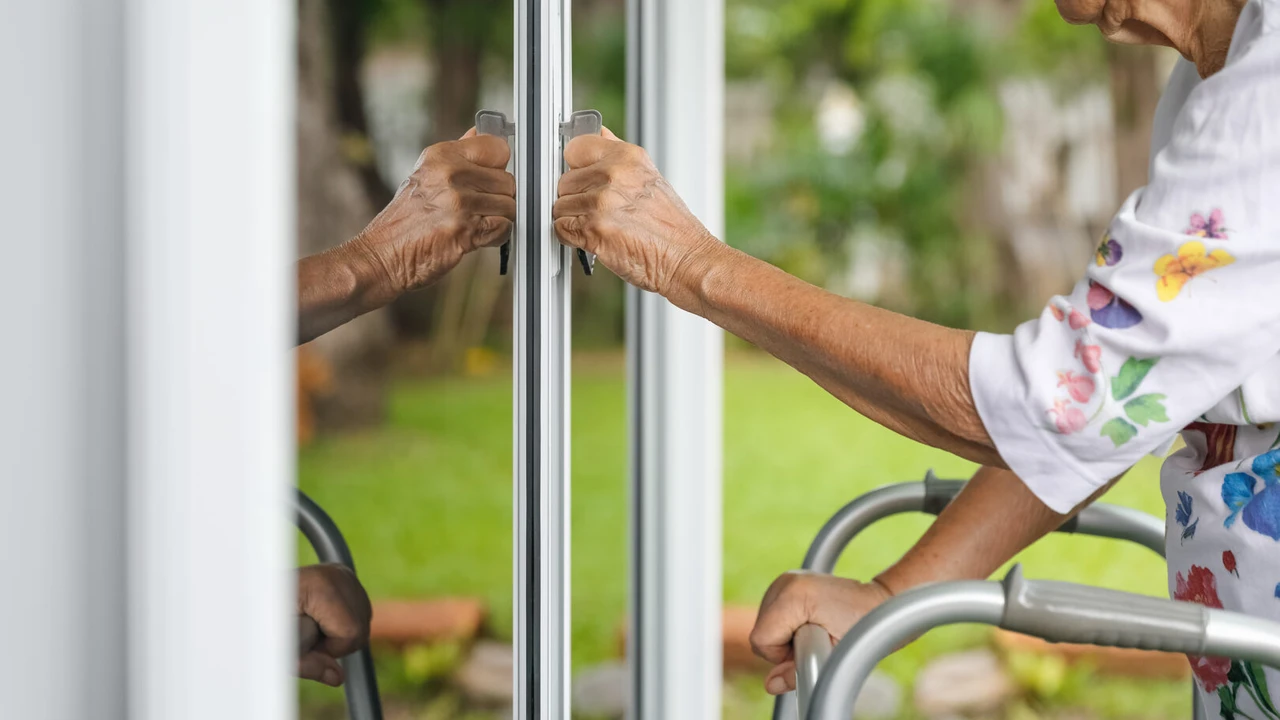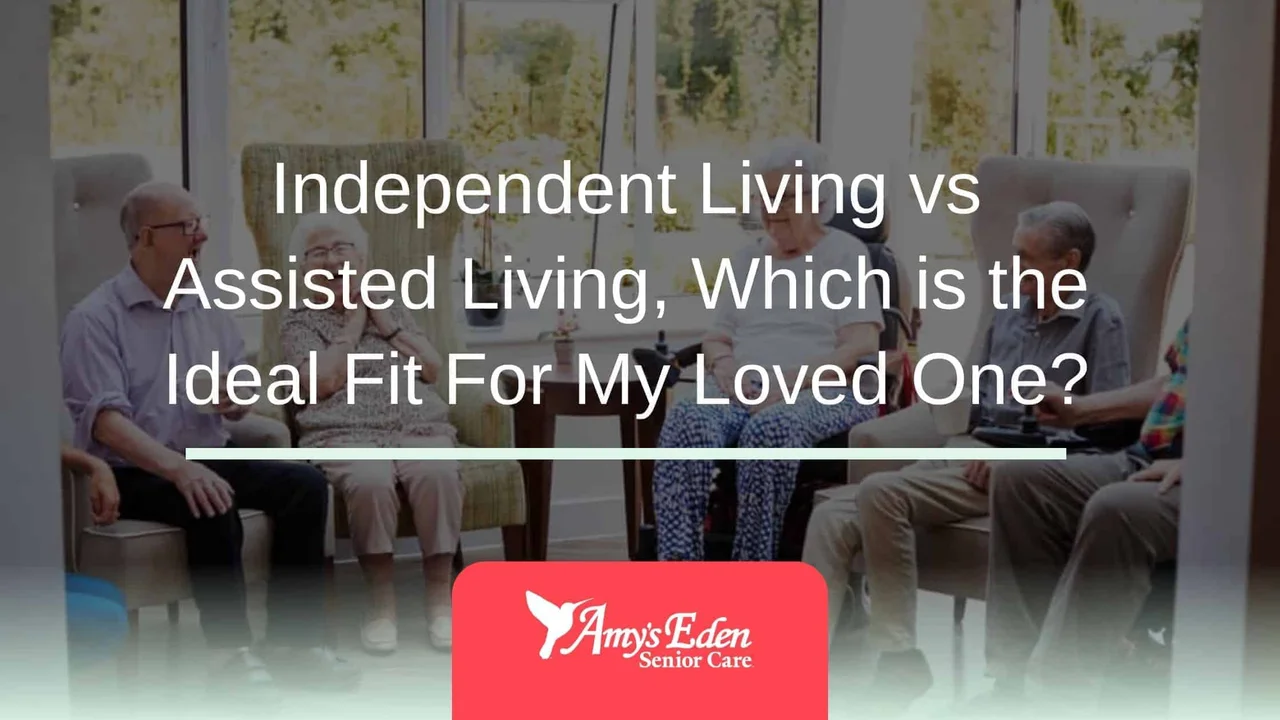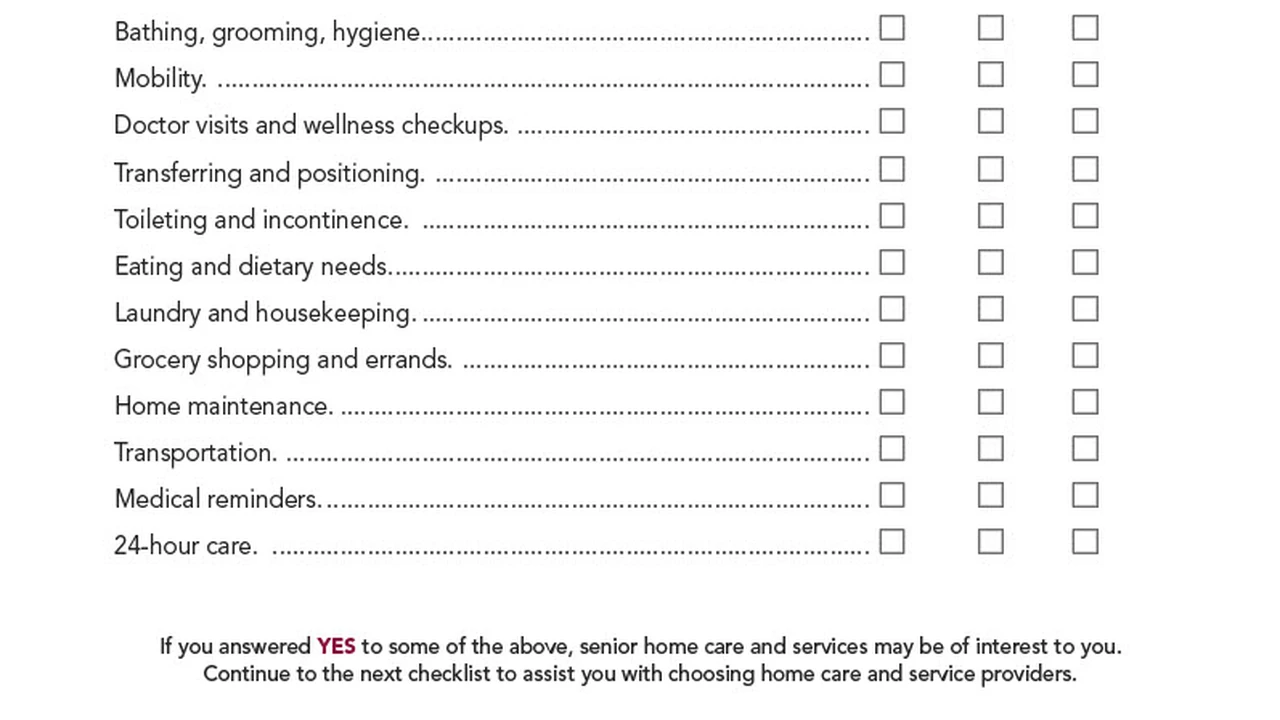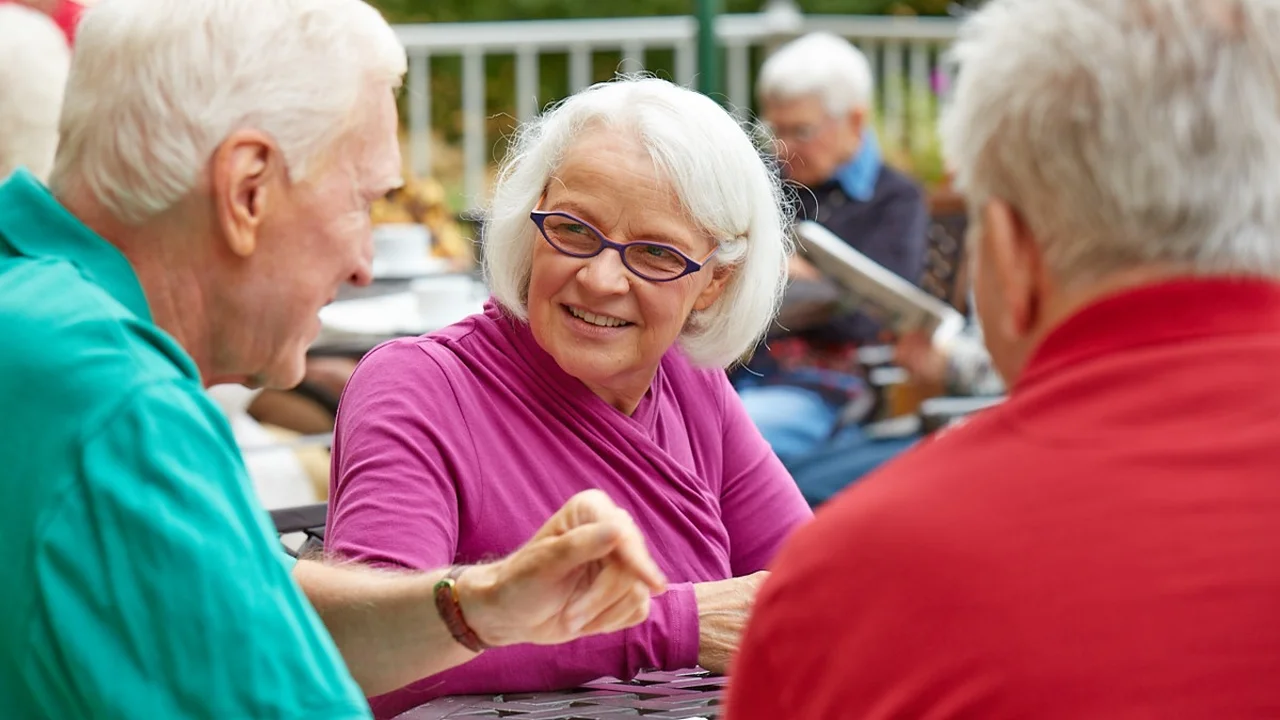Home Care Safety Tips for Seniors Living Alone
Get essential safety advice and strategies for seniors receiving home care, ensuring a secure living environment.

Get essential safety advice and strategies for seniors receiving home care, ensuring a secure living environment.
Home Care Safety Tips for Seniors Living Alone
Living alone as a senior can be a wonderful way to maintain independence and comfort in familiar surroundings. However, it also comes with unique safety considerations, especially when receiving home care services. Ensuring a secure living environment is paramount for peace of mind, both for seniors and their loved ones. This comprehensive guide will walk you through essential safety tips, from fall prevention to smart home technology, helping you create a safe and supportive space.
Understanding Common Home Safety Risks for Seniors
Before we dive into solutions, let's identify the most common hazards seniors living alone face. Recognizing these risks is the first step toward mitigating them effectively. These risks often increase when a senior is receiving home care, as new people are entering the home, and routines might change.
Fall Prevention Strategies for Seniors at Home
Falls are a leading cause of injury among older adults. They can lead to serious fractures, head injuries, and a significant decline in independence. Preventing falls is crucial for maintaining a senior's quality of life. Here's how to make your home a fall-proof zone:
- Clear Pathways: Ensure all walkways are free from clutter, loose rugs, electrical cords, and furniture that could be tripped over. Consider removing throw rugs entirely or securing them with non-slip backing.
- Adequate Lighting: Good lighting is essential, especially in hallways, stairwells, and bathrooms. Install nightlights in bedrooms and bathrooms, and ensure light switches are easily accessible. Motion-sensor lights can be particularly helpful.
- Grab Bars and Handrails: Install grab bars in the bathroom near the toilet and in the shower/tub. Ensure staircases have sturdy handrails on both sides.
- Non-Slip Surfaces: Use non-slip mats in the shower/tub and consider non-slip flooring options in areas prone to moisture, like kitchens and bathrooms.
- Appropriate Footwear: Encourage wearing well-fitting, supportive shoes with non-slip soles, even indoors. Avoid loose slippers or walking in socks.
- Regular Vision Checks: Poor eyesight can significantly increase fall risk. Regular eye exams and updated prescriptions are vital.
- Medication Review: Some medications can cause dizziness or drowsiness, increasing fall risk. Regularly review all medications with a doctor or pharmacist.
- Exercise and Strength Training: Maintaining strength and balance through regular exercise can significantly reduce the risk of falls. Consult with a doctor or physical therapist for appropriate exercises.
Fire Safety and Emergency Preparedness for Seniors
Fire safety is critical, especially for seniors who may have reduced mobility or slower reaction times. Being prepared for emergencies can save lives.
- Smoke and Carbon Monoxide Detectors: Install smoke detectors on every level of the home, especially near sleeping areas, and carbon monoxide detectors. Test them monthly and replace batteries twice a year.
- Fire Extinguishers: Keep a small, easily accessible fire extinguisher in the kitchen and know how to use it.
- Escape Plan: Develop and practice a fire escape plan with at least two exits from every room. Ensure pathways are clear.
- Emergency Contacts: Keep a list of emergency contacts (family, neighbors, doctors) near the phone and in an easily visible location.
- Medical Alert Systems: Consider a medical alert system (more on this later) that can automatically contact emergency services if a fall or other emergency occurs.
- Safe Cooking Practices: Never leave cooking unattended. Use timers and ensure flammable items are away from the stovetop.
- Electrical Safety: Avoid overloading electrical outlets. Regularly check electrical cords for fraying or damage.
Home Security and Personal Safety for Seniors Living Alone
Feeling secure in one's home is fundamental. Seniors living alone can sometimes be targets for scams or burglaries. Here's how to enhance personal and home security:
- Secure Doors and Windows: Ensure all exterior doors have strong deadbolt locks. Consider reinforcing door frames. Install locks on all accessible windows.
- Visible Security Measures: A visible security system, even just a sign, can deter potential intruders.
- Outdoor Lighting: Install motion-sensor lights around the perimeter of the house.
- Mail and Deliveries: Arrange for mail to be held or picked up if you're away. Be cautious about opening the door to unexpected visitors. Verify identities of service providers.
- Scam Awareness: Be educated about common scams targeting seniors (phone scams, online scams, door-to-door scams). Never give out personal financial information over the phone or internet unless you initiated the contact and trust the source.
- Trusted Contacts: Share your schedule and whereabouts with a trusted family member or neighbor.
Leveraging Technology for Enhanced Senior Home Safety
Modern technology offers incredible tools to boost safety and provide peace of mind for seniors living alone and their families. These devices can monitor, alert, and even assist in emergencies.
Medical Alert Systems and Wearable Devices for Seniors
These systems provide immediate access to help in an emergency, especially falls. They typically consist of a wearable button (pendant or wristband) that connects to a monitoring center.
- Traditional Medical Alert Systems: These connect to a base unit in the home and use a landline or cellular connection.
- Mobile Medical Alert Systems: These have GPS tracking, allowing seniors to get help even when away from home.
- Fall Detection: Many modern systems include automatic fall detection, which senses a fall and alerts the monitoring center even if the senior can't press the button.
Recommended Medical Alert Products and Comparison:
When choosing a medical alert system, consider factors like monitoring fees, fall detection accuracy, battery life, and ease of use.
Life Alert
- Features: Well-known brand, 24/7 monitoring, emergency button, some models with fall detection.
- Use Case: Seniors who prioritize a long-standing, reputable service.
- Pros: Established reputation, quick response times.
- Cons: Often more expensive, long-term contracts, less transparent pricing online.
- Estimated Price: Starts around $49.95/month, often requires activation fees and equipment purchase.
Medical Guardian
- Features: Wide range of devices (in-home, mobile, smartwatch), fall detection, GPS, caregiver app.
- Use Case: Seniors seeking flexible options, including mobile solutions and caregiver connectivity.
- Pros: Modern devices, good customer service, no long-term contracts required.
- Cons: Some advanced features can increase monthly cost.
- Estimated Price: Plans start from $29.95/month for basic in-home, up to $49.95/month for advanced mobile with fall detection.
Bay Alarm Medical
- Features: Affordable options, in-home and mobile systems, fall detection, car SOS button.
- Use Case: Budget-conscious seniors who still want reliable protection.
- Pros: Competitive pricing, good customer reviews, no activation fees.
- Cons: Fewer advanced features compared to some premium brands.
- Estimated Price: Starts around $24.95/month for basic in-home, up to $39.95/month for mobile with fall detection.
Smart Home Devices for Senior Safety and Convenience
Smart home technology can automate tasks, monitor the environment, and provide alerts, making daily life safer and easier.
- Smart Lighting: Control lights remotely or set schedules. Motion-activated lights can prevent falls.
- Smart Thermostats: Maintain comfortable temperatures and save energy. Some can detect extreme temperature changes.
- Smart Locks: Allow trusted family members or caregivers to access the home remotely, or provide temporary access codes.
- Video Doorbells: See and speak to visitors without opening the door, enhancing security and preventing scams.
- Voice Assistants (e.g., Amazon Echo, Google Home): Can be used to make calls, set reminders for medication, control smart devices, and even provide entertainment.
- Smart Plugs: Turn off appliances remotely, preventing fire hazards from forgotten irons or coffee makers.
Recommended Smart Home Products and Comparison:
Ring Video Doorbell (e.g., Ring Video Doorbell 4)
- Features: HD video, two-way talk, motion detection, real-time alerts to smartphone, rechargeable battery.
- Use Case: Enhancing front door security, screening visitors, communicating with delivery personnel.
- Pros: Easy installation, wide ecosystem of Ring products, good video quality.
- Cons: Requires subscription for video recording history, battery life can vary.
- Estimated Price: $199.99 (device), subscription plans start from $3.99/month.
Google Nest Hub (2nd Gen)
- Features: Smart display with Google Assistant, video calling, smart home control, sleep tracking, digital photo frame.
- Use Case: Central hub for smart home control, video calls with family, setting reminders, accessing information hands-free.
- Pros: Intuitive interface, excellent voice recognition, integrates well with other Google products.
- Cons: Requires Wi-Fi, some privacy concerns with always-on microphone.
- Estimated Price: $99.99.
Philips Hue Smart Lighting Starter Kit
- Features: Dimmable smart bulbs, control via app or voice, customizable scenes, scheduling.
- Use Case: Automating lighting, creating safe pathways at night, enhancing ambiance.
- Pros: High-quality lighting, extensive ecosystem, reliable performance.
- Cons: Can be more expensive than other smart lighting brands, requires a Hue Bridge for full functionality.
- Estimated Price: Starter kits around $70-$100.
Environmental Sensors for Senior Home Monitoring
These sensors can detect potential hazards that might not be immediately obvious, providing an extra layer of protection.
- Water Leak Detectors: Place these in bathrooms, kitchens, and near water heaters to detect leaks early, preventing costly damage and potential slip hazards.
- Temperature Sensors: Monitor ambient temperature to ensure the home isn't too hot or too cold, which can be dangerous for seniors.
- Door/Window Sensors: Alert if a door or window is opened unexpectedly, enhancing security.
- Motion Sensors: Can be used to monitor activity levels, alerting caregivers if there's unusual inactivity or if a senior hasn't moved for an extended period.
Recommended Environmental Sensor Products and Comparison:
Aqara Water Leak Sensor
- Features: Detects water leaks, sends alerts to smartphone, integrates with smart home hubs (Aqara Hub required).
- Use Case: Early detection of leaks in bathrooms, kitchens, laundry rooms to prevent water damage and slips.
- Pros: Small, discreet, long battery life, reliable.
- Cons: Requires Aqara Hub, not a standalone device.
- Estimated Price: $18.99 (sensor), Aqara Hub M2 around $60.
Ecolink Z-Wave Plus Flood & Freeze Sensor
- Features: Detects water and extreme temperatures (freeze), Z-Wave compatible for integration with various smart home systems.
- Use Case: Comprehensive environmental monitoring for water leaks and potential pipe bursts due to freezing.
- Pros: Dual functionality, wide compatibility with Z-Wave hubs, reliable.
- Cons: Requires a Z-Wave compatible smart home hub.
- Estimated Price: $34.99.
Wyze Sense Kit (Motion Sensor & Contact Sensor)
- Features: Includes motion sensor and contact sensors for doors/windows, sends alerts to smartphone, integrates with Wyze ecosystem.
- Use Case: Monitoring activity, knowing when doors/windows are opened, basic security.
- Pros: Very affordable, easy to set up, integrates with Wyze cameras.
- Cons: Requires Wyze Cam for bridge functionality, not as robust as professional security systems.
- Estimated Price: $29.99 (kit).
Ensuring Safety with Home Care Providers and Caregivers
When home care services are involved, an additional layer of safety considerations comes into play. It's crucial to establish trust and clear communication with caregivers.
Vetting and Background Checks for Home Care Staff
Before allowing anyone into your home, especially for care, thorough vetting is non-negotiable. If you're working with an agency, they should handle this, but it's wise to ask about their procedures.
- Agency Reputation: Choose reputable home care agencies with good reviews and proper licensing.
- Background Checks: Ensure the agency conducts comprehensive background checks, including criminal history and reference checks, for all caregivers.
- Training and Certification: Verify that caregivers have appropriate training and certifications for the services they will provide (e.g., first aid, CPR, specialized dementia care).
- Interview Process: If hiring independently, conduct thorough interviews, check references diligently, and consider using a third-party service for background checks.
Establishing Clear Communication and Boundaries with Caregivers
Open and honest communication is key to a successful and safe home care arrangement.
- Care Plan: Develop a detailed care plan outlining all duties, schedules, and expectations. Share this with the caregiver and keep a copy for yourself.
- Emergency Protocols: Ensure the caregiver knows your emergency contacts, medical history, medications, and what to do in various emergency scenarios.
- House Rules: Clearly communicate any house rules regarding visitors, phone use, or specific preferences.
- Feedback and Concerns: Establish a system for regular check-ins and encourage open feedback. Address any concerns promptly and respectfully.
- Designated Contact Person: If family is involved, designate one person as the primary contact for the caregiver to streamline communication.
Monitoring and Supervision of Home Care Services
Even with trusted caregivers, a degree of monitoring can provide extra reassurance and ensure quality of care.
- Caregiver Logbook: Maintain a logbook where caregivers can record daily activities, medication administration, and any observations or concerns.
- Regular Check-ins: Family members or trusted friends should conduct regular, unannounced visits if possible.
- Remote Monitoring (with consent): If appropriate and with explicit consent, discreet cameras in common areas (not private spaces like bedrooms or bathrooms) can offer peace of mind, especially for families living far away. Always ensure privacy is respected.
- Feedback from the Senior: Regularly ask the senior about their experience with the caregiver. Listen to their feedback and address any discomfort or concerns.
Financial Safety and Preventing Elder Abuse
Seniors living alone can sometimes be vulnerable to financial exploitation. Protecting assets and understanding common scams is vital.
Protecting Against Financial Scams and Exploitation
Scammers often target seniors, using various tactics to gain access to their money or personal information.
- Be Skeptical: If an offer sounds too good to be true, it probably is. Be wary of unsolicited calls, emails, or door-to-door solicitations asking for money or personal information.
- Never Share Personal Information: Do not give out your Social Security number, bank account details, credit card numbers, or other sensitive information to unknown callers or online requests.
- Shred Documents: Shred financial statements, credit card offers, and other documents containing personal information before discarding them.
- Monitor Bank Accounts: Regularly review bank and credit card statements for any suspicious activity. Consider setting up online banking with alerts for unusual transactions.
- Power of Attorney: Appoint a trusted family member or friend as your Power of Attorney for finances to help manage your affairs and provide oversight, especially if cognitive decline is a concern.
Managing Finances Safely with Home Care
When caregivers are involved, it's important to establish clear financial boundaries.
- No Access to Funds: Caregivers should generally not have direct access to your bank accounts, credit cards, or cash.
- Petty Cash System: If a caregiver needs to make small purchases (groceries, supplies), establish a petty cash system with clear receipts and regular reconciliation.
- Bill Payment: Arrange for bills to be paid directly from your bank account or by a trusted family member.
- Secure Valuables: Keep valuable jewelry, important documents, and significant amounts of cash in a secure location, such as a safe deposit box or a locked safe within the home.
Maintaining a Healthy and Supportive Environment
Beyond physical safety and security, a senior's well-being also depends on a supportive and engaging environment.
Nutrition and Medication Management for Seniors
Proper nutrition and adherence to medication schedules are crucial for health and can indirectly impact safety.
- Meal Preparation: Ensure access to nutritious meals. Home care services can often assist with meal planning and preparation.
- Hydration: Encourage regular fluid intake, especially water, to prevent dehydration.
- Medication Reminders: Use pill organizers, smart pill dispensers, or voice assistants to help remember medication times. Caregivers can also assist with medication reminders (but typically not administration unless specifically trained and allowed by state regulations).
- Regular Doctor Visits: Maintain regular check-ups with healthcare providers to manage chronic conditions and review medications.
Recommended Medication Management Products and Comparison:
MedMinder Smart Pill Dispenser
- Features: Automated dispensing, visual and auditory reminders, remote monitoring by family/caregivers, locked compartments.
- Use Case: Seniors with complex medication schedules, those prone to forgetting doses, or needing remote oversight.
- Pros: Highly reliable, prevents overdosing, alerts family if doses are missed.
- Cons: Subscription service, can be expensive.
- Estimated Price: Starts around $49.99/month (includes device and monitoring).
Hero Automatic Pill Dispenser
- Features: Dispenses up to 10 different medications, visual and auditory reminders, companion app for family, locked storage.
- Use Case: Similar to MedMinder, for seniors needing automated, secure medication management.
- Pros: Sleek design, good app integration, large capacity.
- Cons: Subscription required, initial device cost.
- Estimated Price: Device cost around $99, subscription starts around $29.99/month.
PillDrill Smart Medication Tracking System
- Features: Tracks medication intake, sends reminders, visual and auditory cues, integrates with a hub.
- Use Case: Seniors who need reminders and tracking but prefer a more manual approach than fully automated dispensers.
- Pros: User-friendly, good for tracking adherence, less expensive than fully automated options.
- Cons: Not locked, relies on manual interaction.
- Estimated Price: Around $199 (device), no monthly fee.
Social Engagement and Mental Well-being for Seniors
Isolation can be a significant risk for seniors living alone, impacting both mental and physical health.
- Regular Social Interaction: Encourage participation in social activities, clubs, or community centers. Home care providers can often facilitate outings.
- Family and Friend Visits: Maintain regular contact with family and friends through visits, phone calls, and video chats.
- Hobbies and Interests: Support engagement in hobbies and interests that provide mental stimulation and enjoyment.
- Pet Companionship: For those who can manage it, a pet can provide immense companionship and purpose.
- Mental Health Support: Be aware of signs of depression or anxiety and seek professional help if needed.
Creating a Personalized Home Safety Plan for Seniors
Every senior's needs are unique. A personalized safety plan ensures all specific risks are addressed and appropriate solutions are in place.
Assessing Individual Needs and Risks for Seniors
Start by conducting a thorough assessment of the senior's current living situation, health status, and daily routines.
- Home Safety Audit: Walk through the home with a critical eye, identifying potential hazards (clutter, poor lighting, loose rugs, difficult-to-reach items).
- Health Assessment: Consider any medical conditions (e.g., balance issues, vision impairment, cognitive decline) that might increase safety risks.
- Mobility and Dexterity: Evaluate the senior's ability to move around independently, open containers, or operate devices.
- Technology Comfort Level: Assess their willingness and ability to use new technology.
Involving Family and Caregivers in Safety Planning
Safety planning is a team effort. Involve all key stakeholders to ensure comprehensive coverage and support.
- Open Discussion: Have an open and honest conversation with the senior about safety concerns and potential solutions. Respect their autonomy while emphasizing their well-being.
- Assign Roles: Clearly define who is responsible for what aspects of the safety plan (e.g., family member for technology setup, caregiver for daily checks).
- Regular Review: Periodically review and update the safety plan as the senior's needs or living situation changes.
Regular Maintenance and Updates for Senior Home Safety
Safety is not a one-time fix; it requires ongoing attention.
- Routine Checks: Regularly check smoke detector batteries, test medical alert systems, and inspect grab bars and handrails for stability.
- Home Repairs: Address any necessary home repairs promptly, such as leaky faucets or loose floorboards.
- Technology Updates: Ensure smart home devices and apps are updated to their latest versions for optimal performance and security.
- Stay Informed: Keep up-to-date on new safety products, technologies, and common scams targeting seniors.
By implementing these comprehensive safety tips and leveraging available technology, seniors living alone can continue to enjoy their independence in a secure and supportive home environment. It's about creating a balance between freedom and protection, ensuring peace of mind for everyone involved.
:max_bytes(150000):strip_icc()/277019-baked-pork-chops-with-cream-of-mushroom-soup-DDMFS-beauty-4x3-BG-7505-5762b731cf30447d9cbbbbbf387beafa.jpg)






